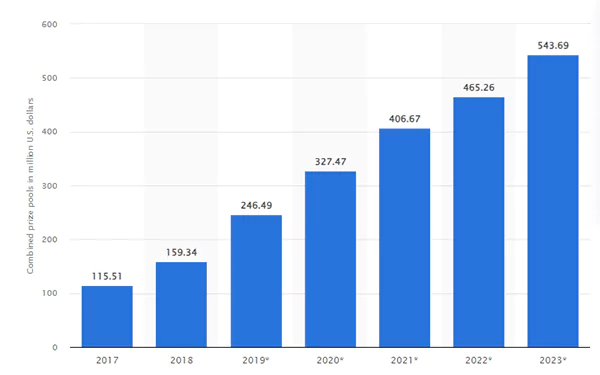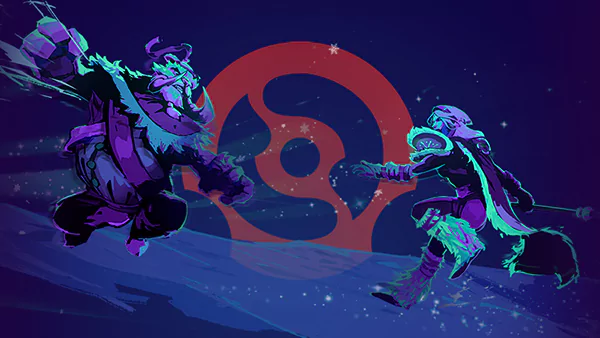Esports for Dota 2 have a troubled past. It has crossed international borders, undergone a name change, a plethora of creative teams, and even two well-known developers during its existence.
Although it was the first competitive MOBA, its original version is no longer played professionally. You can find the latest information on GGBet official website.
Where Did the Dota Esports Scene Start?
The term “Dota” was originally an acronym for “Defence of the Ancients,” despite the present absence of capitalization. The fan-creators (note: not Dota 2) built a game mode where two teams of five players competed for control of an area in the hopes of “pushing” into the opposing side’s base and destroying their “Nexus” in 2002.
The game mode was initially developed and released as a “mod,” or modification, to the Blizzard Entertainment-developed Warcraft III. The idea gained popularity, and various fan creators took over the effort. Players of the mod, mostly from Asian nations, started planning competitions around the game during this time, fully independent of the developer.
Fan creators refined the idea into something that could be played seriously competitively as the game’s esports gradually acquired a mass. Eventually, they produced DotA Allstars, which eventually became the de facto “official” version of the initial mod.
From there, the playthrough saw an increase in competition. Independent of Blizzard, third-party tournament organizers developed events and an entire competitive atmosphere for the Esport.
The mod version still had a fanbase into the 2000s and was the only MOBA—a name that hadn’t even been invented—that was played widely worldwide. Then, pretenders to the throne started to emerge.
While Allstars continued to be successful in the East, its rivals’ growing popularity meant that something significant would need to happen for it to compete. Valve stepped in at that point.

(This graph shows the annual combined eSports prize pools worldwide from 2017 to 2023, in U.S dollars)
The Valve Opens the Tap
When IceFrog announced in 2009 that he had joined Valve and was collaborating on a project with the authorities, everyone knew that it would be a MOBA of some sort. But we didn’t learn about Dota 2 in any formal capacity until 2010.
Although Valve made the game public and said that a beta version would be available in 2011, the company offered some press members early access to the playthrough, and the results were encouraging. Except for a contentious trademark application for the term “Dota,” which resulted in years of legal disputes, part 2’s development was relatively calm for several months.
When the massive gaming convention Gamescom 2011 came around, Valve determined that the best way to introduce part 2 to the general audience was to stage a $1.6 million tournament, the biggest prize for any Esports competition.
In addition to inviting attendees to the beta test, the modest stand in the heart of Gamescom showcased the title to viewers around the globe who were following the competition live. Many people learned what it was and immediately wanted to play it, proving it was a brilliant approach.
As the months passed, Valve began inviting an increasing number of individuals to the beta, and a pro scene emerged. It started tiny, with primarily online tournaments and prize pools that infrequently exceeded $25,000 per. However, it marked the beginning of what would grow to be the largest professional gaming scene ever.
The International 2 was soon announced with a $1.6 million prize pool, although this time, it was held in Seattle after a year had elapsed since the Gamescom unveiling. This was the point at which the scene began to take off, with a larger player base and the public having access to the beta if desired.
It was also in a much better shape; even if it lacked all of the content, it had a significantly larger hero pool and was much simpler to operate, enhancing the action. Between TI2 and TI3, Dota 2 had tremendous development.
In the middle of 2013, the game was ultimately made available on Steam for everyone to play, which brought in a huge influx of new players. Valve also secured crowdfunding for the TI prize pool, which increased the money offered by more than $1 million. Over the following few years, it expanded relatively quickly, and the tournament scene advanced.
Do You Know?:-
ESports worldwide are expected to show an annual growth rate (CAGR 2023 – 27) of 9.54%, resulting in a projected market volume of $871 in 2023.
How Does Dota 2 Appear?

Dota 2 has undergone numerous improvements over 15 years of development, but its fundamental design has not changed. Part 2 is a 5-on-5 competitive game in which teams compete to demolish the base of the opposition, similar to most MOBAs.
It is played on a single “map” (gaming slang for playfield), which has two symmetrical sides and is dotted with objectives and creatures.
It has tremendous strategic depth despite the fact that the terrain only changes seldom and incrementally. It requires players to select from over 100 characters to build up their rosters to attain that depth.
Many in-match objects increase the complexity after starting the contest. Even though the field of play may not be altered frequently, every time two teams enter it, a new match begins. Part 2 has endured its popularity for so long because of this.
Wrapping Up
Today is still one of the most widely played esports, and the professional scene is still quite popular. The International is the largest annual Esports tournament, with millions in prize money awarded each year.
It has been well over 15 years since DotA began, but the amazing thing is that if you compare the early iterations of the original mod to the current game, you can still tell that it is fundamentally the same playthrough.
It is showing no signs of slowing down anytime soon, so it wouldn’t be shocking to see it continue to rule for another ten years.